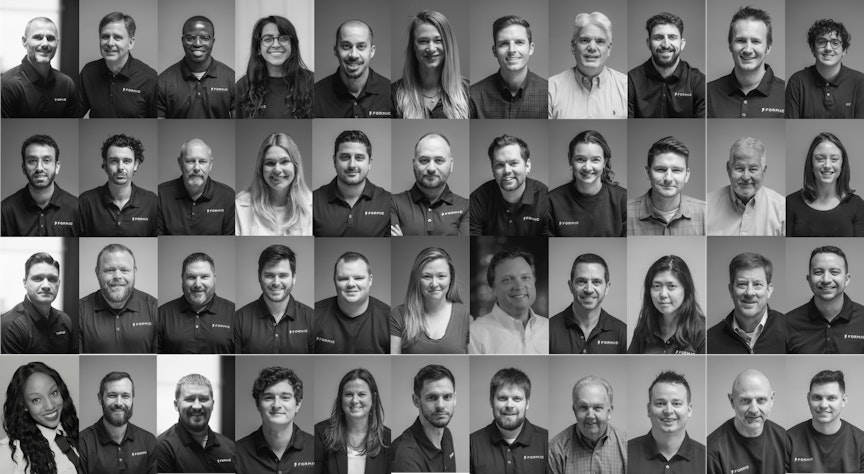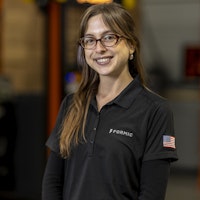This year, a record number of CPG companies will invest in production automation. The reasons for these investments have persisted over the years and continue into 2025: challenges with labor shortages, a prioritization of employee safety, a tight focus on production efficiency, and a need to lower factory costs.
In fact, Deloitte’s Digital Maturity Index survey found that 98% of 800 surveyed manufacturers started their digital transformation journey in 2023, compared with 78% in 2019. Technology like automation is no longer an option, it’s a requirement to stay efficient and competitive. It’s a now, not a later.
Mi Rancho, a tortilla and salsa manufacturer, relies on end-of-line automation, but this isn’t a solo mission. Joe Santana, Mi Rancho’s Senior Director of Operations, told us that automation is becoming an industry-wide strategy for efficiency.
“We run 24 hours a day, we have three shifts, and 70% of our lines will be on three shifts this year,” he said. “We have to be competitive. Labor costs continue to escalate and so we have to look at that. Robotics are going to be strategic, not only for Mi Rancho, but I think industry-wide.”
However, not all companies have enough (or any) CapEx spending to put toward robotic production automation, which is traditionally viewed as expensive and time-consuming. Business leaders have enough to focus on when it comes to keeping up with consumer demand and ensuring employees are satisfied in order to retain their skilled talent.
But it’s 2025 — there are now cost-effective and flexible options available that don’t require upfront investments, internal expertise, or risk that are allowing CPG leaders to automate on a budget.
We’re talking about full service robotic automation rentals, which might be the key to making automation truly accessible and easy.
Can Robotic Production Automation Be Budget-Friendly and Flexible?
Historically, automation has been seen as something unavailable to small and medium businesses primarily due to the high equipment costs and time expended on hiring or training internal expertise. This is often still the case when it comes to traditional automation equipment purchases, which do require a big upfront investment (plus a lot of patience to see any ROI) and an internal resource to ensure the equipment stays up and running optimally.
But there are more flexible options that offer robots on a time-based agreement instead of having to buy the equipment outright: robot rentals, which is often referred to as Robots-as-a-Service or RaaS. To put the automated solution in layman’s terms: instead of owning the equipment, the maintenance, equipment swapping, and replacement parts are on the solutions company to provide at no extra cost. It’s an end-to-end solution built specifically for each customer.
I know it feels like there’s a catch, but there isn’t. Many robotics companies want U.S. manufacturers to have access to accessible and easy automation because it ensures the U.S. remains at the helm of innovation.
For example, companies like Formic offer subscription-based robotic automation models that don’t lock customers into long-term commitments, shorten the time to ROI, and allow customers to grow with their systems. With Formic, customers are guaranteed better production performance results because it’s literally built into the contract. RaaS is an accessible option because it eliminates barriers like upfront costs, the need for hardware and software maintenance teams and programs, and the hiring of external consulting on the deployment of industrial robots. Plus, it can serve as an option in place of unreliable temp labor.
On the point of temporary workers, many manufacturers rely on them, which can be an issue for businesses in the long term. They are called temporary workers for a reason: they are brought in to temporarily close labor gaps, not serve as a permanent solution.
Robotic Production Automation = Investing in Employees
It has been a challenge to fill essential production gaps on the factory floor because many roles are unsafe, ergonomically unsustainable, and can feel monotonous and unrewarding for employees.
A study conducted by Deloitte and The Manufacturing Institute in 2024 found that roles that require higher-level skills could grow the fastest between 2022 and 2032 and that a combination of technical manufacturing, digital, and soft skills will be prioritized.
Santana told us about Mi Rancho’s journey to automation due to the company’s struggle to fill open roles. “We’re going to grow about 20 million pounds and produce around 70 million pounds, so it’s tremendous growth for us,” he said. “It has not been easy to find the labor and we haven’t been able to fill all the positions we would like. That’s been a big factor for us to go in the direction of automation.”
One of the biggest misconceptions about automation is that it replaces human jobs, but this idea comes from a fear of change. Automation doesn’t take jobs, it transforms old processes and creates new opportunities for human workers. Roles like robot programmer/technician, as well as software developer/engineer, exist because of advancements in technology.
To ensure automation leads to job enrichment without putting the onus on the company to train employees on something they aren’t experts in themselves, businesses can partner with robotic companies that offer team training. Formic, for example, has a Full Service Palletizer program that includes team training — making it easy to transition end-of-line workers to true robot operators in just a few days.
A Full Breakdown of the Robot Rental Process
So, what does “renting” a robot instead of committing to the ownership of one entail? A few steps.
Before integration, the automation company will assess factory needs and processes to design a technical solution. From there, the renter will get a subscription-based rate, with a longer commitment often equating to the lowest quote. After signing a contract for that rate, the building and development begin. This usually takes between 4-10 weeks and varies based on the company and complexity of the system.
After the system has been built and added to the company’s production floor, testing takes place to ensure it is properly integrated into current operations without any disruptions. This is where a company that offers team training, like Formic, is advantageous because they will also spend a few days making sure employees feel comfortable operating the new robotic system.
Once the robot is up and running optimally, that’s when the renter starts paying for the solution (and not a second before). From there, most robot rental companies will offer things like monitoring, tech support, a dedicated success team, and options to swap equipment as needed.
Finally, once your renting period is over (the contract ends), companies have the option to renew, upgrade, or return the system.
This process differs from one automation company to another, but it’s a good general overview of what the process looks like.
With robot rentals, there are no strings attached after a contract ends, so there’s no fear of ending up with a robot in the corner of the production floor under a dusty tarp because it just didn’t quite run on the production line as planned. This is how CPGs are automating on a budget with no CapEx or risk attached.
When we talked to Adam Bragg, the Plant Technical Director of Cameron’s Coffee, he emphasized the value of the end-to-end solution robot rentals brought to Cameron’s production floor. “We like that they provide the entire solution, including committed uptime and service.”
Are Robot Rentals the Only Option? No, but It’s the Best One
Between 2024 and 2034, the RaaS market will grow at an annual compound growth rate of 17%, according to Precedence Research, as more and more companies realize the necessity of flexible solutions that can change with the business.
Shoestring innovation is all about optimizing available resources. Is there any greater optimization than relying on another company to bolster production efficiency and only paying when it works? If there is, I haven’t heard about it.


